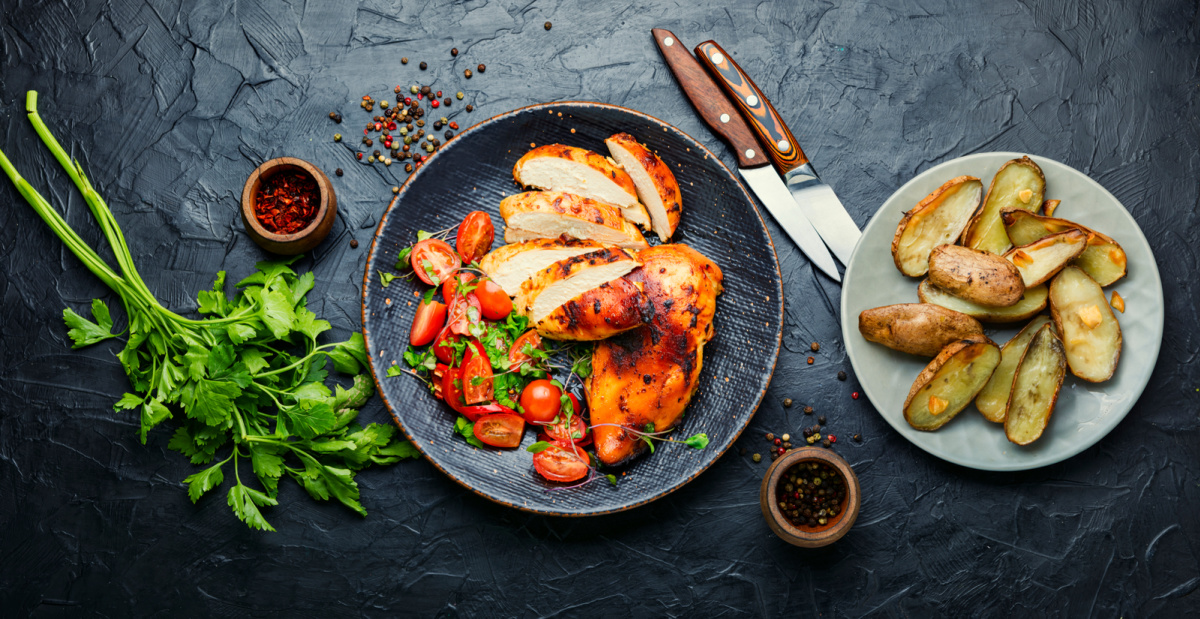How To Use Images in Your Restaurant Email Marketing Campaigns
5 Min Read By Martin Gessner
Using images in restaurant email marketing is a great way to reach your current audience and expand as well. But how can I use images in my restaurant email marketing campaigns?
Well, keep reading this article to find out exactly how to incorporate images into your promotional emails. There are seven tips in total, but the most basic tips are very simple to implement and are very cost-effective.
1. Invest in High-Quality Pictures of Dishes
It doesn’t matter how good the food is at your restaurant, if your customers can’t see the quality through high-quality images, the email marketing won’t work. So make sure you either hire a professional photographer or use a high-quality in-house photographer to take pictures of your dishes.
The professional photography should feature the dishes you want to push and any dishes that are included in deals or discounts. The images need to showcase the dishes and make the best features shine. Here’s an example of a high-quality picture of a dish:
The image is clear, appetizing, and showcases all the toppings on the pizza. You get a feel from the image of how the food will taste and what the atmosphere of the restaurant might be like. Bad photography can make good food look awful, so make sure you hire the right photographer to get the best results.
2. Select the Right Size and Format
If your images are too large, they will slow download time, making interaction less likely. So make sure your images are less than 200 pixels in height and 600 pixels in width. But even if you stay within these parameters, you still need to test your images before sending out your email marketing.
You also need to select the right format so your images are the best possible quality for your intended purpose.
-
JPEG: JPEGs are low quality, but are more compressed and take up less space. So using JPEGs gives a fast load time.
-
PNG: PNGs are the best format to use when you want to incorporate text. The format is also great for logos and colorful photos. But beware, PNGs can have slower load times.
-
GIF: The GIF format is great for animation and videos, as email doesn’t allow videos. GIFs have less detail and color vibrancy compared to a PNG, but they benefit from faster load times.
By using this information, you should be able to decide which image type is best suited for your purposes. For example, if you needed lots of smaller images in one email for a particular campaign, you might opt for JPEGS, as the small size accommodates multiple images in one email.
3. Add Alt Text to Images
Some users will be unable to see your email marketing image content; this is where alt text comes in. Alt text is text inserted as an attribute in HTML that tells the web visitor what the image means. Using alt text is important as it allows all to see the image, making the most out of your email marketing campaigns.
Alt text is important for SEO as it allows search engines to index the images correctly. Also, not having alt tags can negatively affect your search engine rank, and when a page doesn’t render properly, the alt text appears instead, giving site visitors an idea of what they were supposed to see.
The alt tag allows the viewer to understand the image without having to see the image itself, which provides value to your email marketing campaigns.
4. Include Webpage Links
You can get more value from your images by including webpage links. The links can go to your home page, product pages, customer service page, blogs, or articles, wherever you need them to go! But you need to ensure the link is relevant to the image.
It’s also important the webpage links are formatted correctly so they don’t look like spam, and make sure it’s clear where the link is going. The reader needs to be confident they can click the link without any risk and that they will gain value from clicking on the link.
5. Ensure the Images Work Across all Devices
The images you use need to work across all devices, but especially mobile devices, as this is where most email marketing is consumed. Different devices, email apps, and web browsers will display images differently, so you need to test emails with different devices before you send them out.
Large images can be an issue. A large image can slow load times, take up unnecessary space, and cause SEO problems, especially if displayed incorrectly on a device. So make sure you account for image size and the size of your website on different devices, as the size of your website will affect your image size capacity. For example, the wider your page, the bigger your images can be, and if your website has one column you’ll have more space to work with than a two-column website.
Another issue that can arise is proportion distortion. When an image designed for a website is displayed on a mobile device with a small screen, it stretches, distorting it and slowing the load time. To resolve this issue, you can use a responsive website template that will automatically resize images and other website elements according to the screen size.
You can also optimize your images to work across all devices by remaining the files. Instead of ‘image4’, rename it to something more descriptive like ‘crab cakes.’ Adding an alt tag and caption is a good idea, too.
But remember to act on feedback regarding how the images are displayed on different devices, as it also allows the biggest share of your email list to see the images as intended.
6. Promote Your Discounts
Promotion and discount emails are some of the most popular types of email marketing. But what should you include in your discount-promotion email marketing? Including images in email marketing newsletters help your promotions stand out and improve the chances the recipient will use the discount.
In fact, according to Convince & Convert, 75 percent of consumers report scouring their inboxes just for relevant discounts. Also, an SSRN paper found 65 percent of Americans are visual learners, meaning the majority engage best with images.
So, combining discounts with images in email newsletters is the best combination for promoting your discounts using email marketing.
7. Include Photos of Your Customers
Human connection can go a long way in marketing. So, with consent, include images of customers in email marketing campaigns. If your email list connects with your images, they are more likely to consume the content.
The best way to get photos of your customers is by simply asking for submissions on social media, perhaps with a small incentive, or you can hire a photographer at events that promote your product or service. Just make sure to only use the best shots, as the photographs still need to be high quality.
If you're worried about making costly mistakes while including photos of your customers, worry not! There are resources out there to help you avoid email marketing mistakes, including asking for permission from your customers.
Using images in your restaurant email marketing campaigns is easy if you consult the examples and explanations in this article. There are many benefits to using images in email marketing, such as improved click rates, better showcasing of products, and adding more value to customers’ lives.
The first way you can use images in your restaurant’s email marketing is by taking high-quality photographs of your dishes. The right photographs taken by a professional photographer showcase your dishes and enhance your newsletters and promotions. You can also use images to promote the foods included in your discounts.
Including images featuring your customers can help create a human connection with your advertising and increase social media engagement. Also, you can use images to promote web page links to important pages. But make sure you select the right size and format, add alt text to images, and ensure the images work across all devices.
If you incorporate images using these seven examples you’ll be reaping the benefits of using images in email marketing in no time. But you also need to master the basics of email marketing, too.


